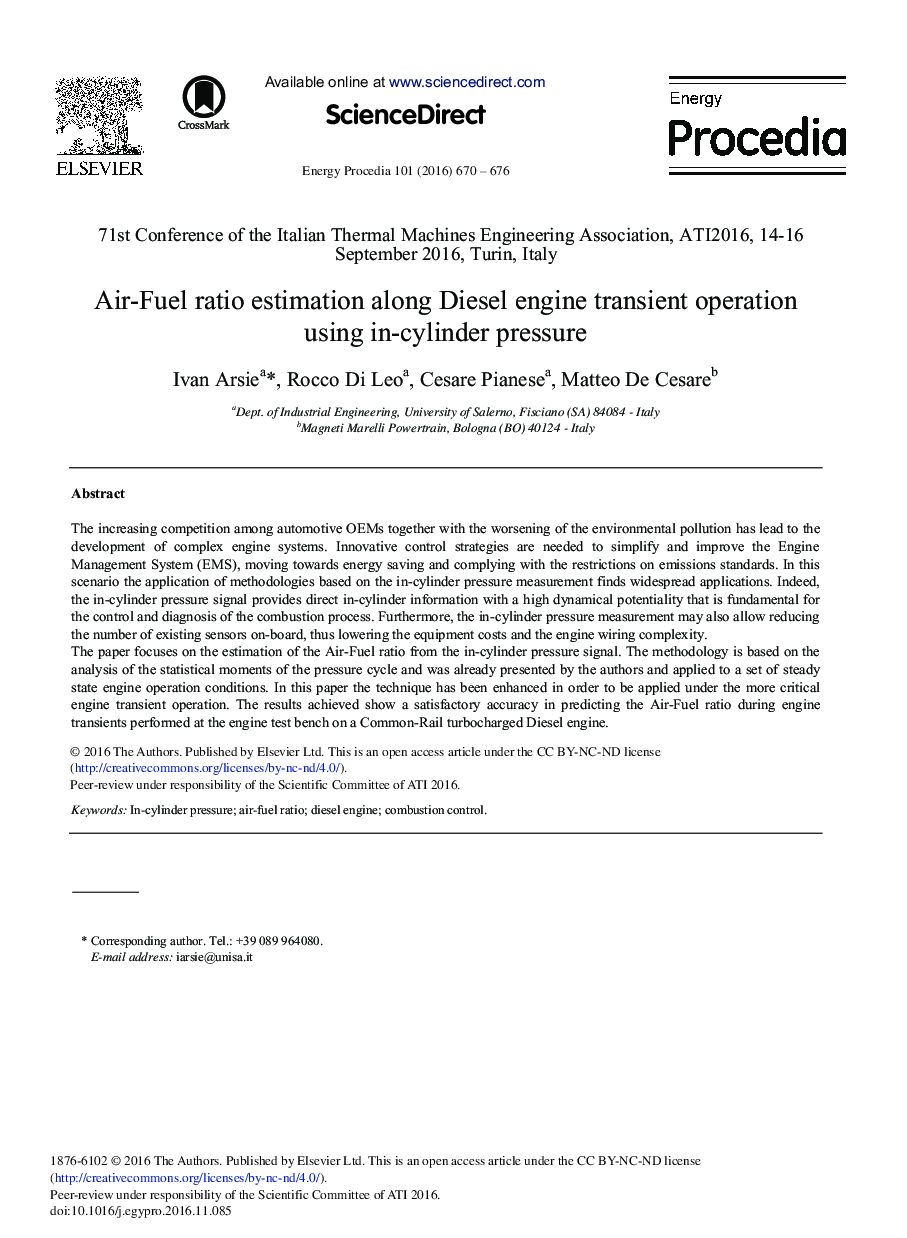| Article ID | Journal | Published Year | Pages | File Type |
|---|---|---|---|---|
| 5446513 | Energy Procedia | 2016 | 7 Pages |
The increasing competition among automotive OEMs together with the worsening of the environmental pollution has lead to the development of complex engine systems. Innovative control strategies are needed to simplify and improve the Engine Management System (EMS), moving towards energy saving and complying with the restrictions on emissions standards. In this scenario the application of methodologies based on the in-cylinder pressure measurement finds widespread applications. Indeed, the in-cylinder pressure signal provides direct in-cylinder information with a high dynamical potentiality that is fundamental for the control and diagnosis of the combustion process. Furthermore, the in-cylinder pressure measurement may also allow reducing the number of existing sensors on-board, thus lowering the equipment costs and the engine wiring complexity.The paper focuses on the estimation of the Air-Fuel ratio from the in-cylinder pressure signal. The methodology is based on the analysis of the statistical moments of the pressure cycle and was already presented by the authors and applied to a set of steady state engine operation conditions. In this paper the technique has been enhanced in order to be applied under the more critical engine transient operation. The results achieved show a satisfactory accuracy in predicting the Air-Fuel ratio during engine transients performed at the engine test bench on a Common-Rail turbocharged Diesel engine.
